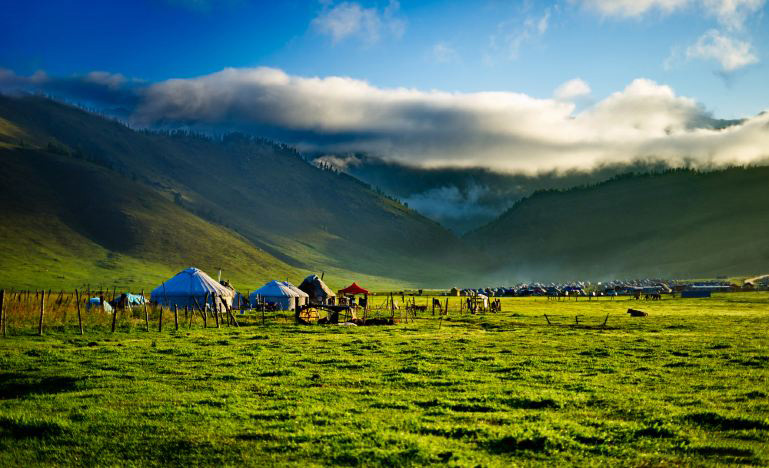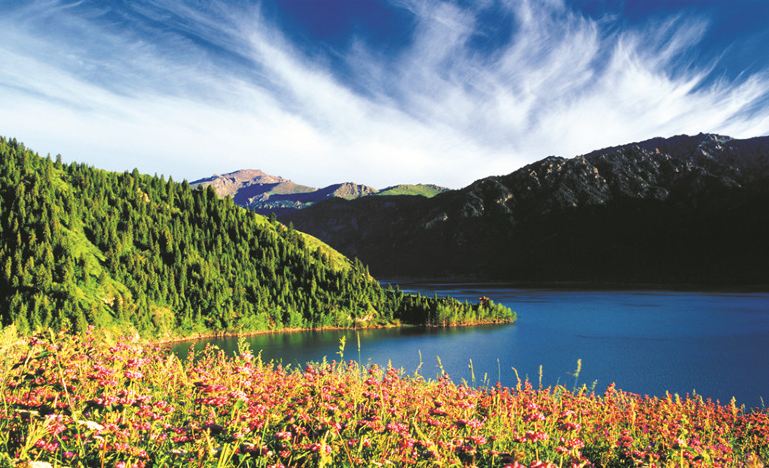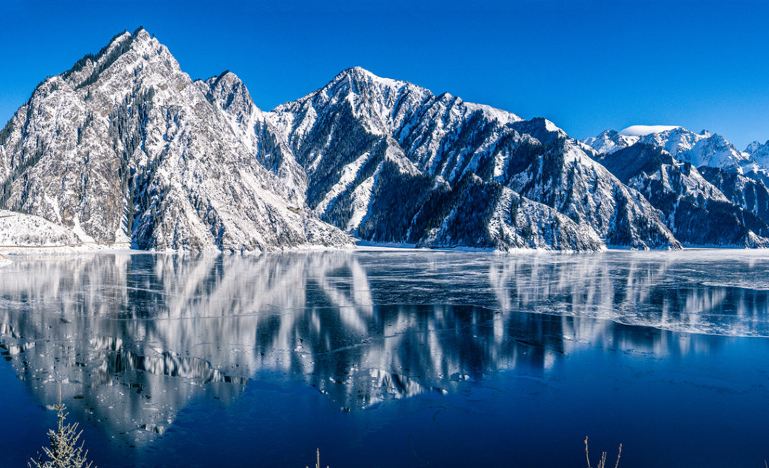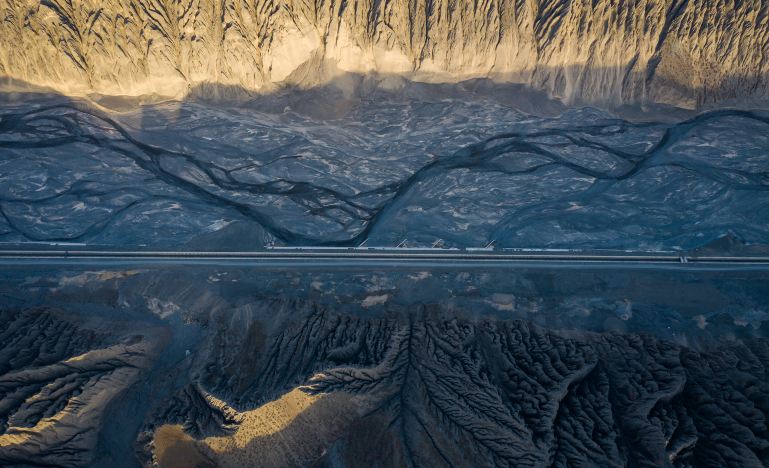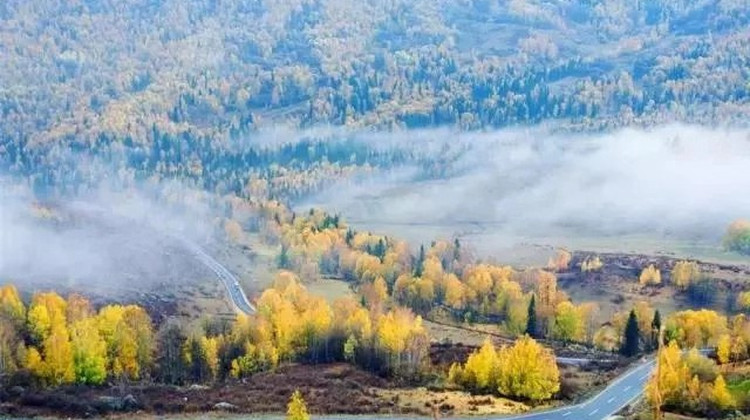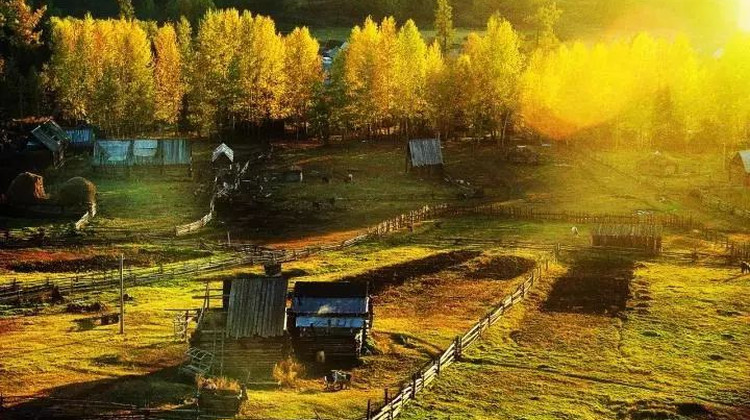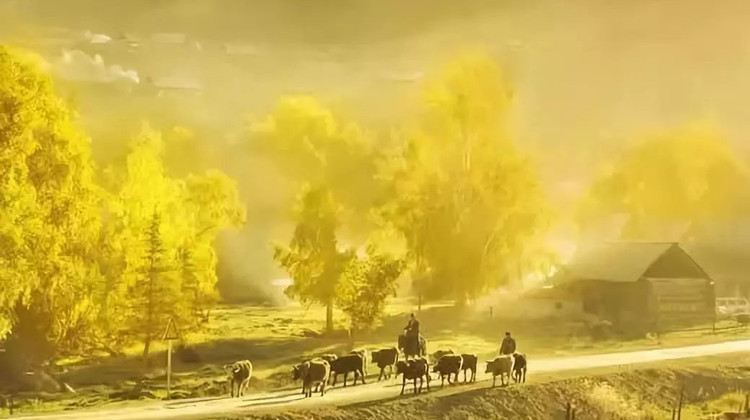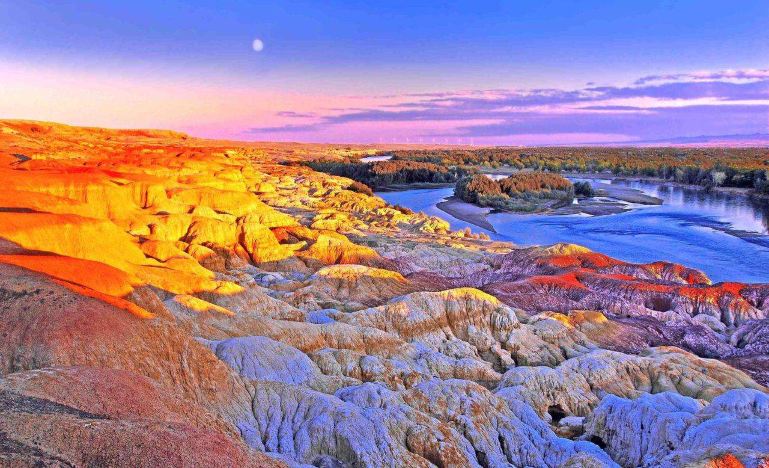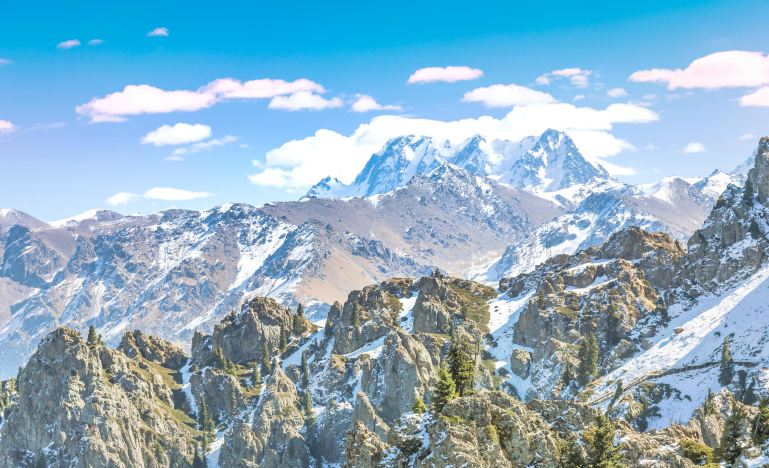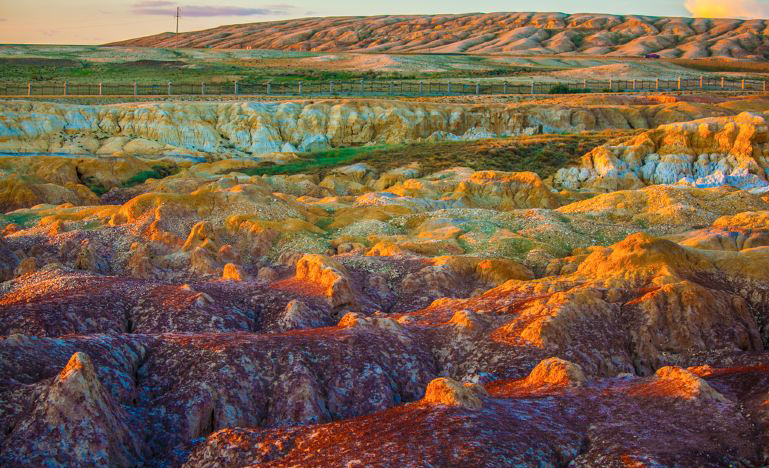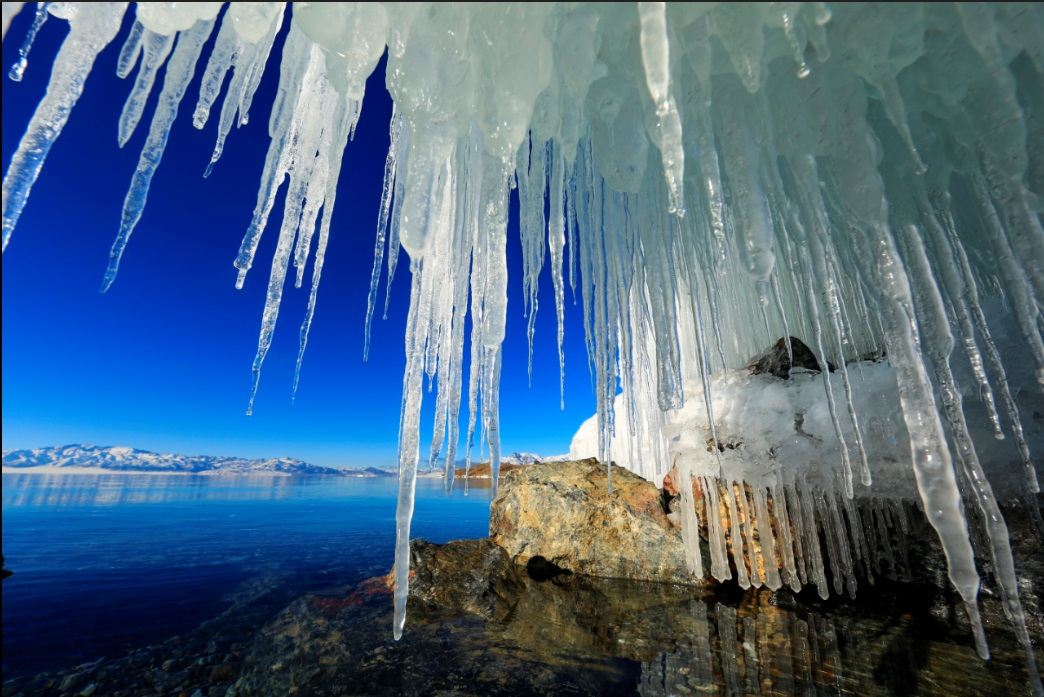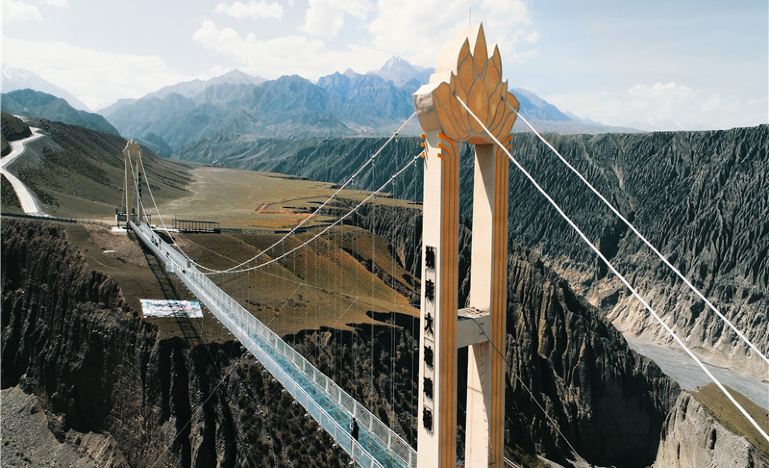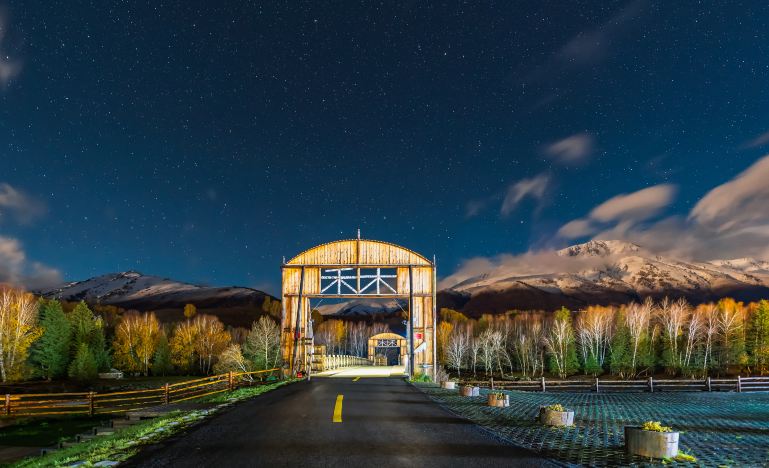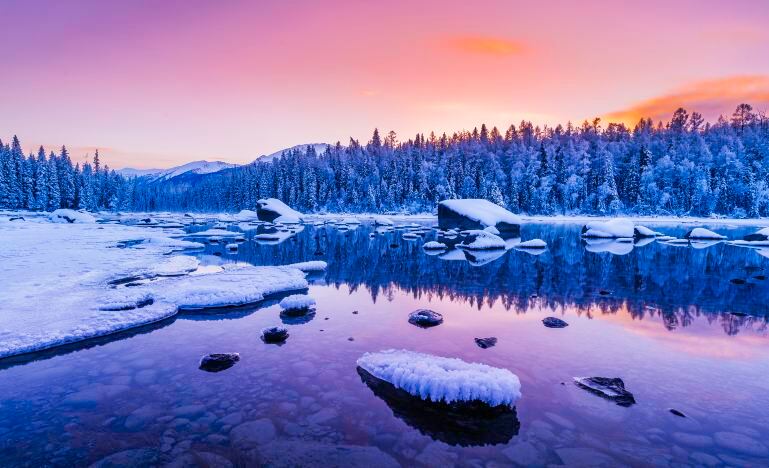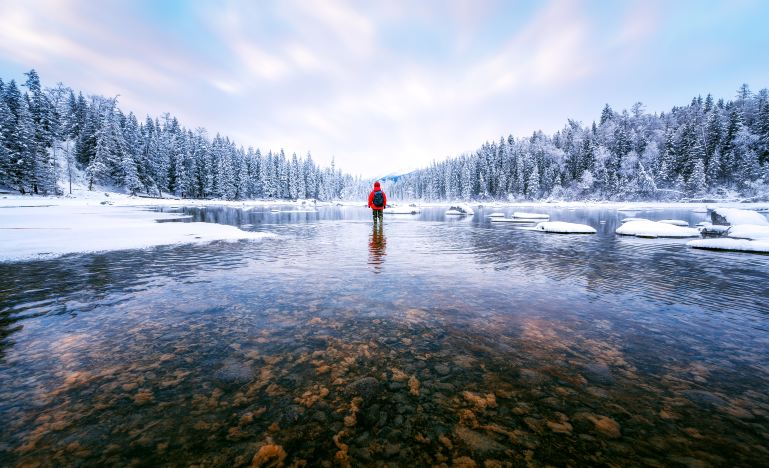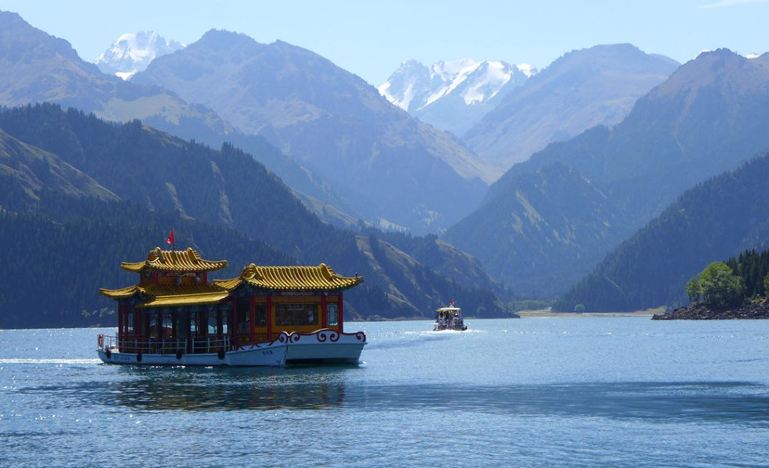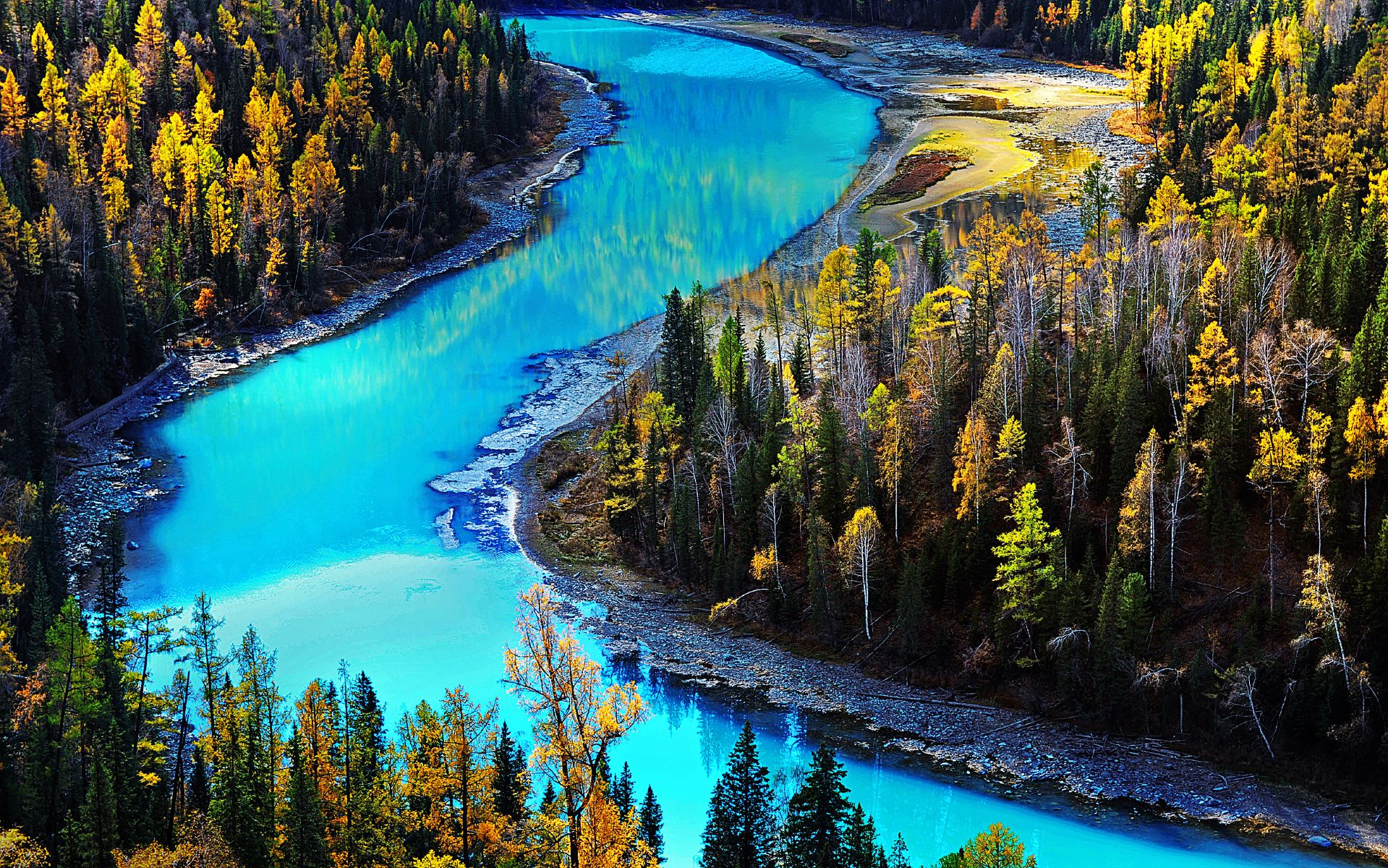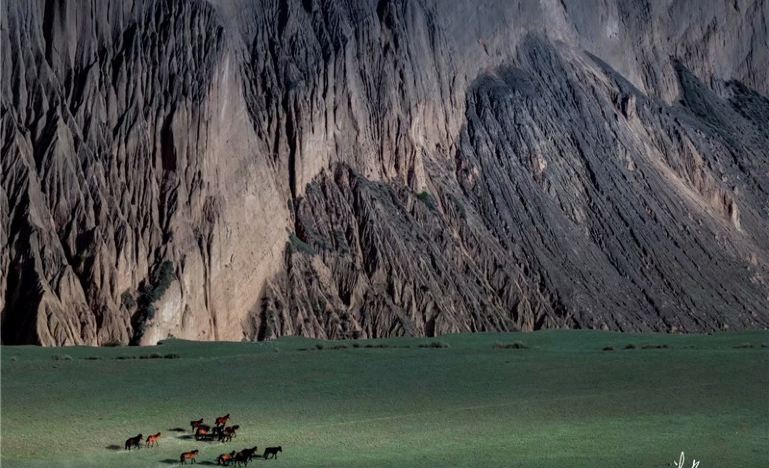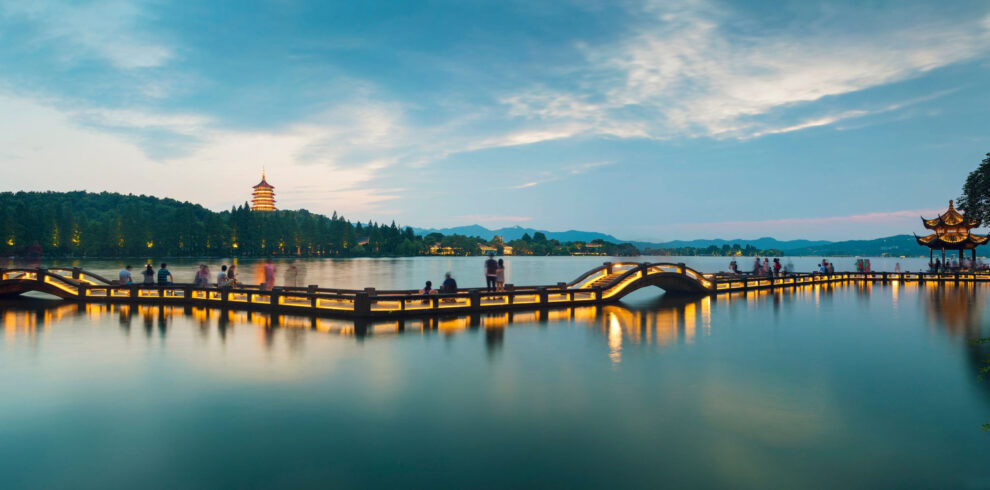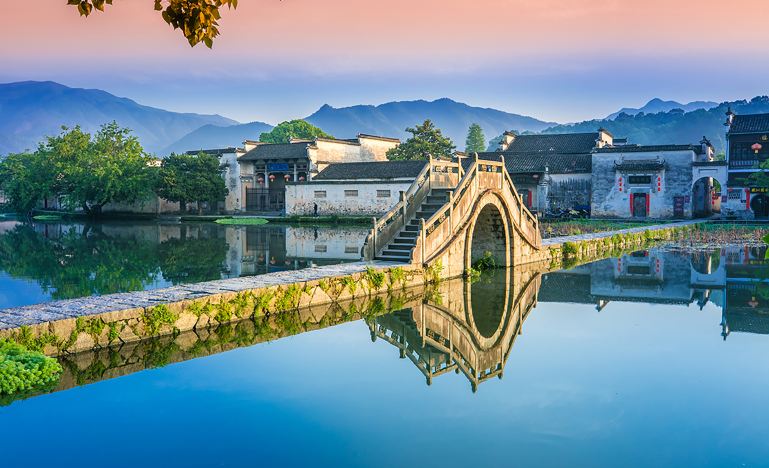Xinjiang Northern Xinjiang + Kanas Scenic Area + Hemu Scenic Area + Sayram Lake 7-Day 6-Night Private Group Trip
★ **[Three Lakes Tour]** Heavenly Pool of Tianshan + Sayram Lake + Kanas Lake; “God’s Own Land” Hemu Village, the miraculously crafted Dushanzi Grand Canyon, and the internet-famous Colorful Beach. 【[Internet-Famous Scenic Highway]** S21 Desert Scenic Expressway, touring the beautiful scenery of the Gurbantünggüt Desert.
Note:
- Xinjiang is recommended for travel in the autumn and winter seasons. Please keep warm due to the extreme temperature differences between day and night.
Itinerary
Upon arriving in Urumqi,
Indulge in the long-awaited Western Region cuisine that everyone craves when they come to Xinjiang. Urumqi is the heart of Xinjiang’s cuisine, where you can taste authentic and delicious dishes such as barbecue (mutton skewers), roasted whole lamb, pilaf, hand-pulled noodles, naren, horse sausage, blood sausage, and noodle lung soup. Hurry up and start a feast for your taste buds!
Some recommended Urumqi foods:
1. Wenzhou Street Food Street: New-style fusion restaurants, revolving hot pot, Xin Ding Meatball Soup, air-dried meat pilaf restaurant, salmon head, etc.
2. Xingfu Road Food Street: Shawan Big Plate Chicken, Ma Shi Jiu Bao, Ma’s Braised Goose, etc.
3. Altay Road Food Circle: Blood Station Big Plate Chicken, Gu Bo Pen Pen Meat, Grain Insect Chicken, etc.
4. Changsha Road Pilaf Street: A variety of characteristic pilaf restaurants.
Tianchi (Chinese: 天池; pinyin: Tiānchí, Uyghur: بوغدا كۆلى) is an alpine lake in Xinjiang, Northwest China. The name (天池) literally means Heavenly Lake and can refer to several lakes in mainland China and Taiwan. This Tianchi lies on the north side of the Bogda Shan (“Mountain of God”, Bogda is a Mongolian word meaning “God”) range of the Tian Shan (“Mountain of Heaven”), about 30 kilometres (19 mi) south of Fukang and 45 kilometres (28 mi) east (straight-line distance) of Ürümqi. It is an alpine drift lake shaped in the Quaternary Glacier period.
Kanas Lake (Chinese: 喀纳斯湖; pinyin: Kānàsī Hú, Xiao’erjing: كَانَاسِ خٗ; Mongolian: Ханас нуур; Uyghur: قاناس كۆلى, USY: Қанас Көли) is a lake in Altay Prefecture, Xinjiang, China. The lake is located in a valley in the Altai Mountains, near the very northern tip of Xinjiang and the autonomous region’s borders with Russia, Kazakhstan and Mongolia. The lake was formed around 200,000 years ago during the Quaternary period as a result of glacier movement. The crescent moon shaped lake has an estimated water storage capacity of 53.8 billion cubic meters, coupled with an average depth of around 120 meters.
The Kanas River, flowing out of the lake, later merges with the Hemu River to form the Burqin River, which itself discharges into the Irtysh River at Burqin Town, the county seat of Burqin County.
There is a large population of ethnic Tuvans and Kazakhs in the Kanas valley. While most of these people have maintained their traditional agricultural and nomadic life styles, many work in the developing tourism industry and have established facilities for orienteering, hiking, rafting, rock climbing, paragliding and camping. The scenic spot is classified as a AAAAA scenic area by the China National Tourism Administration.
Hemu Village (Tuvan: Ком, Oirat: ᠬᠣᠮ, Kazakh: قوم) is located in the northern part of Xinjiang Uyghur Autonomous Region of China, bordering Kazakhstan to the northwest and is about 70 kilometers away from the Kanas River. Administratively, it belongs to Hemu Kanas Mongolian Township, Burqin County, Altay Prefecture, Ili Kazakh Autonomous Prefecture. In 2005, it was selected as one of China’s most beautiful villages by the “Huaxia Geography” magazine.
The residents of Hemu Village are mainly Tuvan and Kazakh ethnic groups, who mainly rely on nomadic herding for their livelihood.
This place is one of the only three Tuvan villages remaining in China.
Sayram Lake (Chinese: 赛里木湖; pinyin: Sàilǐmù hú; Kazakh: Сайрам көлі, romanized: Sairam köli; Mongolian: Сайрам нуур, romanized: Sairam nurr), also known as Santai Haizi (Chinese: 三台海子) or historically the “Clean Sea” (净海), is an endorheic freshwater lake in the northern Tianshan Mountains at Börtala Mongol Autonomous Prefecture, Xinjiang, China, less than 50 km (31 mi) from the border with Kazakhstan. The name Sayram originally derives from Kazakh, meaning “blessing”.
The lake is the largest (458 km2 or 177 sq mi) and also the highest (at 2,070 m or 6,790 ft) alpine lake in Xinjiang, largely filled by glacial meltwater, residual precipitation from the Eurasian westerlies and runoffs from the surrounding mountain chains, as well as some groundwater springing and seepage. It is an AAAA National Scenic Area since 2010.
Known as the “Duku Secret Realm, a Wonder of a Billion Years,” the Dushanzi Grand Canyon is located in the Dushanzi District of Karamay City, Xinjiang. The Dushanzi Grand Canyon is situated at an altitude of 1070 meters and is characterized by its gorge landform. The width of the valley floor ranges from 100 to 400 meters, while the width of the valley shoulders is from 800 to 1000 meters. The height from the valley floor to the valley shoulders reaches up to 200 meters. It serves as the starting point of the Duku Highway, one of the most beautiful roads in China, and is also the first scenic spot on the Duku Highway.
The fame of Dushanzi in Xinjiang is not only due to this grand canyon but also because it is the birthplace of Xinjiang’s first oil well. In 1909, the local government of Xinjiang spent 300,000 taels of silver to purchase machinery from Russia and drilled Xinjiang’s first oil well in Dushanzi. The “Xinjiang Atlas” described it as “the well is 7 to 8 zhang deep (approximately 23 to 26 meters), with sounds inside like waves, and oil and gas are billowing and gushing out directly.” “When ignited, the flame is several feet high.” In May 2013, Xinjiang’s first oil well in Dushanzi was listed as a national key cultural relics protection unit.
Urumqi has few international flights, and it is necessary to transfer in Chengdu or Xi’an.
FAQs
A: Kanas Lake is a lake in Altay Prefecture, Xinjiang. It was formed around 200,000 years ago during the Quaternary period as a result of glacier movement.
A: The residents are mainly Tuvan and Kazakh ethnic groups who rely on nomadic herding. It is one of the only three Tuvan villages remaining in China.
A: Sayram Lake is an endorheic freshwater lake in Xinjiang. The name originally derives from Kazakh, meaning “blessing”.
A:For 144hour-free-visa, you can refer this post 144-hour-Visa-Free Transit policies for Foreign Nationals – A Complete Guide in 2024 – ChinaTravelTips (china-travel-tips.com)

